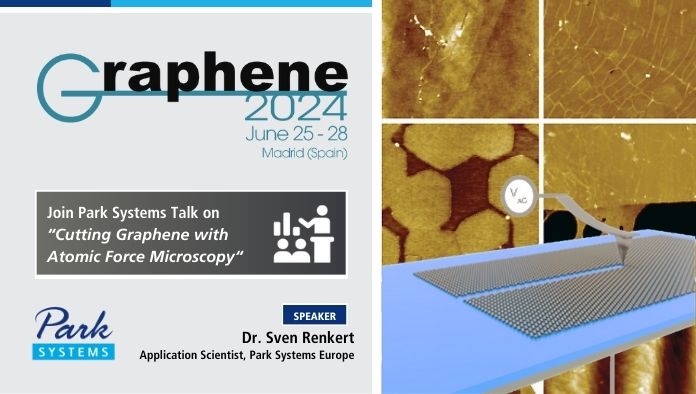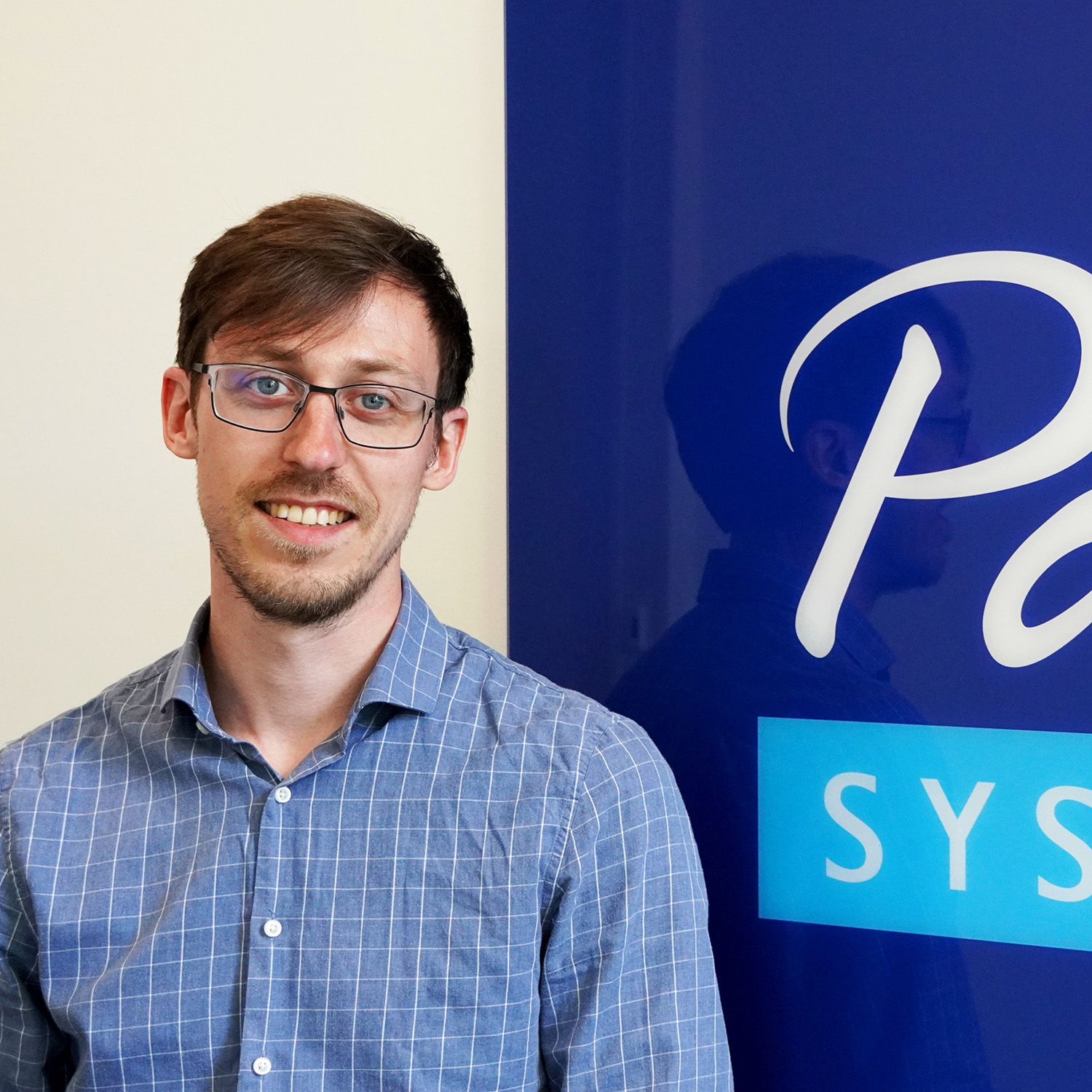
The 14th edition of the Graphene Conference, the largest European event in graphene and 2D materials, is set to captivate Madrid from June 25–28, 2024. As the main in-person meeting point for the global graphene community, this conference has become synonymous with cutting-edge research, collaboration, and exploration of the boundless potential of graphene and its 2D counterparts.
- • Date:June 25 - 28
- • Venue: Espacio Pablo VI, Madrid, Spain
- • Our Location: tbc
Immerse yourself in the latest advancements and discoveries within the graphene community. From fundamental research to industrial applications, the conference covers a spectrum of topics, offering a comprehensive overview of the field.
_______________________________________________________________________________________________________________________
Join Dr. Sven Renkert, Application Acientist, Park System Europe, at the Graphene 2024 his talk
- ⏩ TITLE: “Cutting Graphene with Atomic Force Microscopy”
- ⏩ DATE: Thursday, June 27, 2024, at 15:05 during the Industrial Forum
ABSTRACT
Presenting Author: Sven Renkert, Co-Author: James Kerfoot
¹ Park Systems Europe, Mannheim (Germany)
Materials and Manufacture, Department of Industrial and Materials Science, Chalmers University of Technology, Göteborg (Sweden)
Atomic Force Microscopy (AFM) is well established as an analytic tool to image various properties of 2D nanomaterials with nanometer resolution, from simple topography to complex properties like moiré patterns emerging on twisted bilayers of graphene or hBN/graphene heterostructures. However, AFM also allows for controlled manipulation and fabrication of nanostructures [1] and novel applications like mechanically reconfigurable devices [2]. Advances in local anodic oxidation [3] make these manipulations reliable, clean, fast, and easy to use under ambient conditions.
Applying AC instead of DC voltage for local anodic oxidation via capacitive coupling allows using the technique on any sample without an electrode or electric contacts. This approach simplifies sample preparation and enables a vast selection of sample materials while improving the reliability and quality of lithographic cuts without the need for additional AFM equipment.
In this talk, we are discussing the theory of electrode-free local anodic oxidation. The influence of parameters such as relative humidity, applied voltage, and frequency is evaluated with practical examples. Automated lithography gives access to more complex patterns and improves both the speed and usability of the patterning process.

Figure 1: Topography images of a single- and double-layer graphene flake on silicon after cutting twice (left) and three additional times (right). Lateral Force Microscopy (LFM) images below reveal clean residue-free cuts with good contrast in friction. Sketch of the working principle of electrode-free local-anodic oxidization [2] on the right side.
References:
- [1] Yu K. Ryu and Ricardo Garcia, Nanotechnology, 28 142003 (2017).
- [2] Hongyuan Li, Zhe Ying, Bosai Lyu, Aolin Deng, Lele Wang, Takashi Taniguchi, and Kenji Watanabe, Nano Letters, 18 (12) (2018), 8011–8015.
- [3] Andrew Z. Barabas, Ian Sequeira, Yuhui Yang, Aaron H. Barajas-Aguilar, Takashi Taniguchi, Kenji Watanabe, and Javier D. Sanchez-Yamagishi, Science Advances, 9–14 (2023).
_______________________________________________________________________________________________________________________
About Graphene:
Graphene Conferences are the biggest events in graphene and 2D materials held in Europe and have become the primary global hub for in-person meetings for the graphene community thanks to their previous iterations.

